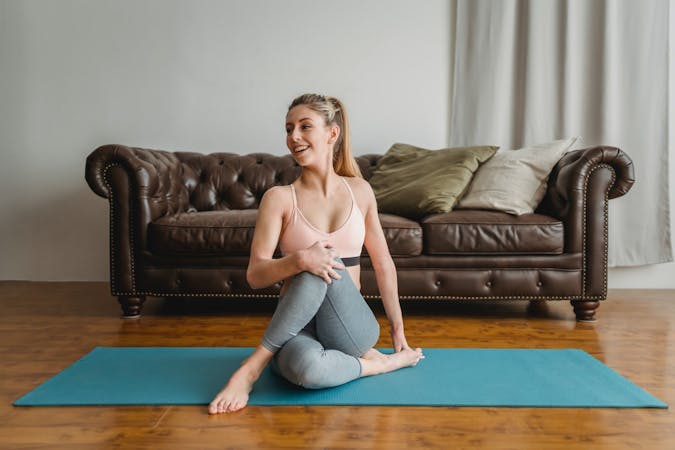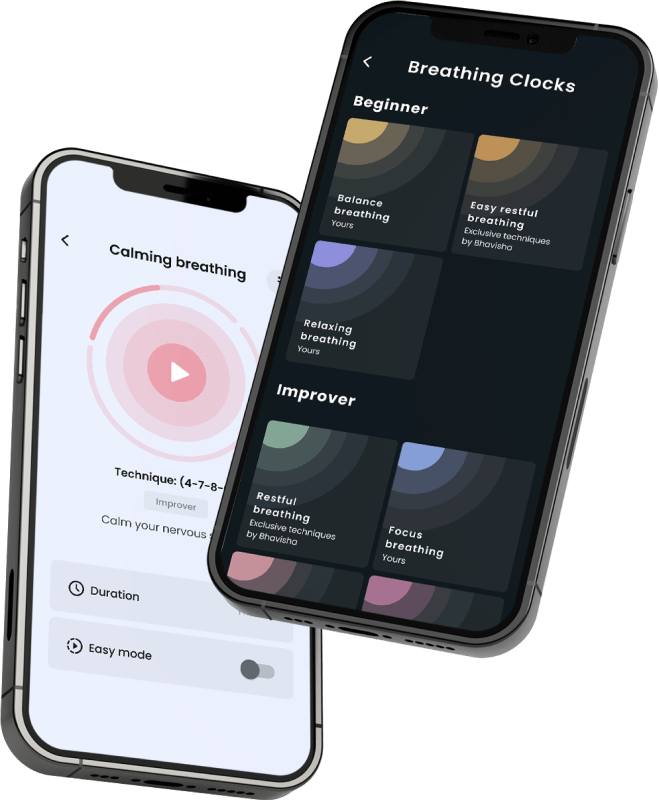Why Does Yoga Feel So Good

The benefits of yoga seem unlimited. It's an exciting, non-stop and evolving list that changes with us and for us every day.
Within the fields of science, spiritually and movement, researchers are interested more than ever in proving that physical and mental changes can occur in people who regularly practice yoga, meditation and other somatic practices. Quite simply, it has a positive effect on brain and hormone activity.
Research covers anything from decreasing stress, reliving anxiety or depression, to reducing chronic pain or improving sleep quality, breathing, flexibility and balance. So, the obvious answer to, Why does yoga feel so good is, Because it is so good for us! Our body knows, feels and appreciates all these benefits.
Why does yoga make me happy?
Serotonin is our happiness chemical and yoga is a natural way to release that hormone and give that us that mood boost. Studies prove that when we exercise levels of serotonin escalate and causes us to have a spring in our step. While this surge is linked to any type of exercise, yoga is particularly helpful because of its calm and relaxing nature and because all levels of expertise can have a go.
There are three yoga moves in particular that can directly raise levels of serotonin and give an endorphin release. Give them a go to feel looser, better and calmer..
Breath of Joy
This is great for simulating every organ in the body and in activating the parasympathetic nervous system which has a calming result. Stand in a relaxed position with the feet slightly wider than hip-width then raise the arms over the head, breathe slowly and steadily through the nose and swing the arms to the side. Swing the arms up again, bend at the waist slowly and exhale through the mouth. Then slowly raise back up and repeat. You are deep breathing throughout so remember to go slowly and focus on your breath.
Jumping Lunges
This is lively movement used in yoga class to elevate the heart rate. Get into a runner’s lunge position staying light on the fingertips, raise the hips slightly and switch the legs by jumping. Keep doing the switch trying to get faster as you do it for 30 seconds. Enjoy the blood pumping and increased heart rate!
Camel Pose
The camel pose opens up your heart and gets blood flow quickly around the body. Kneel on the floor, sitting straight up with palms high up on the glutes. Now inhale and bend back looking upwards. Your tailbone is lengthening and you’re lifting up through the chest bending backwards. Press the hips forward and draw thighs back towards the calves. Be mindful of the lower back and only bend from upper-middle back where the ribcage can protect your spine.
Why does yoga make you feel calm?
To have that lovely calm and content feeling we need to lower cortisol, the stress hormone released by the adrenal glands. Cortisol helps your body deal with stressful situations, known as the fight or flight response, but when cortisol levels are too high for too long, the hormone can lead to potential harmful conditions such as high blood pressure, disrupted sleep, fatigue low mood and weight gain. Yoga and breathing techniques are proven to lower cortisol levels and therefore increase your zen. Those poses which are anchored and aid relaxation and recovery help us here, namely, Shavasana (corpse pose), Balasana (child’s pose), Virabhadrasana (Warrior 2 pose), or Sukhasana (simple cross-legged pose).
Meanwhile, the repetitive moments of yoga itself help our mind to quieten. The way we move our body, or how we breathe will be imitated by our mind. So, it is only logical that after synchronising breath and movement for at least 15 minutes, we get these happy hormones and feel that life is good!
What yoga does to your brain
The techniques that centre around yoga such as deep breathing, soft muscles, being in the present moment and having a clear mind all help eliminate stress, bad habits and promote the cycle of positivity. Not only that but scientific research from the National Institutes of Health found that yoga practitioners had less grey matter decline in the brain - grey matter decline is natural with age - specifically in regions of the cortex, involved in the experience of positive states like joy and happiness.
Additionally, yoga has been found to increase activity in the anterior cingulate cortex and the medial prefrontal cortex. In real terms, these are areas of the brain that are associated with empathy, gratitude and kindness. In other words, practicing yoga will help us to feel more positive emotions and be more people-focused, thus making us happier over time.
What is a yoga high?
Ask any die-hard yogis and they’d enthusiastically tell you about the yoga high. But is it really a thing? Many yoga fans claim to experience a blissful, euphoric high after certain yoga practices and it’s a fact that the physical practice of yoga releases chemicals in the brain that produce that rush of happiness. But a yoga high comes from more than just a physical state - it’s a philosophy of feeling fulfilled on a spiritual and emotional level. It’s about being in tune with ourselves and our emotions. Regular yoga practice unlocks keys to a happy existence which in turn creates a natural and joyous feeling or buzz!.

